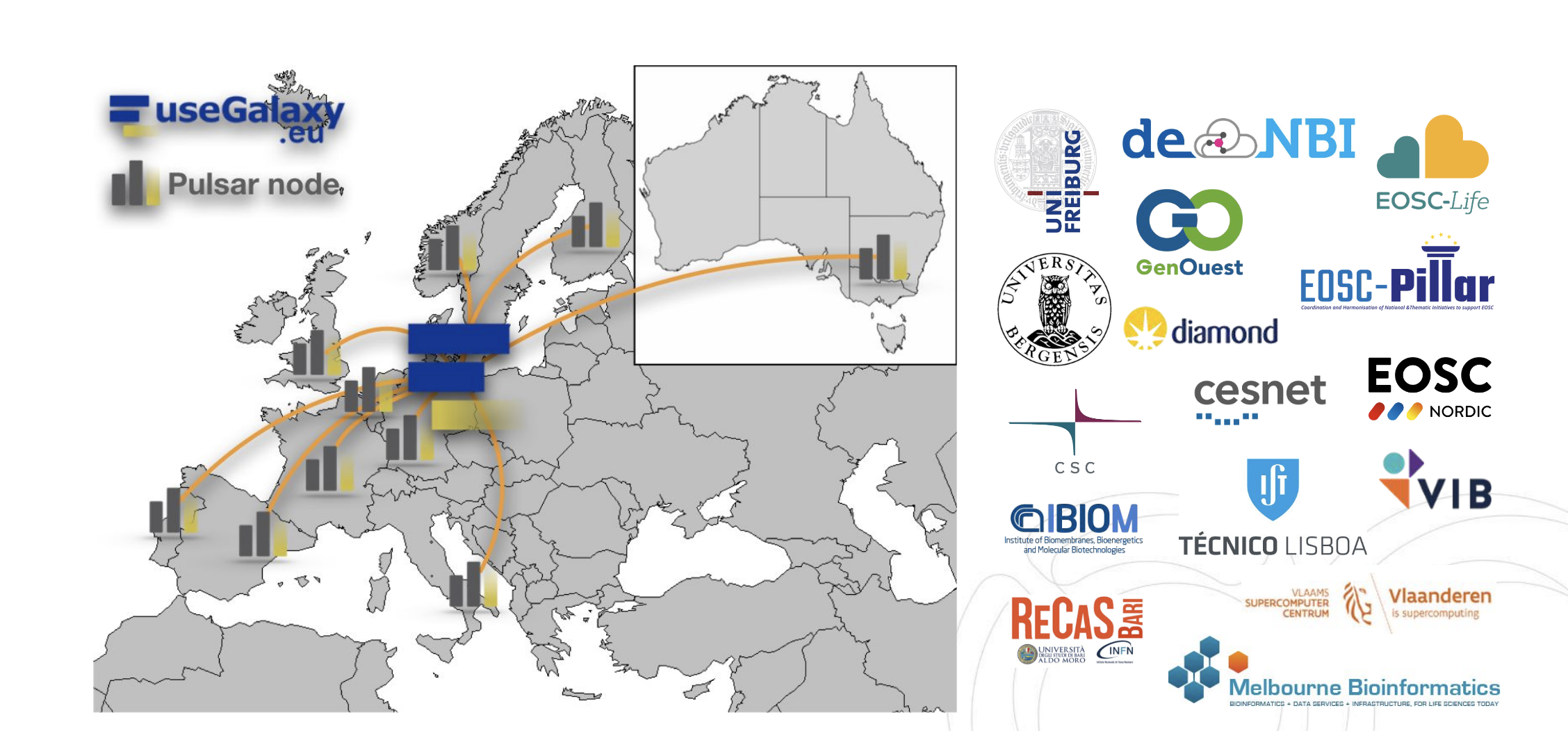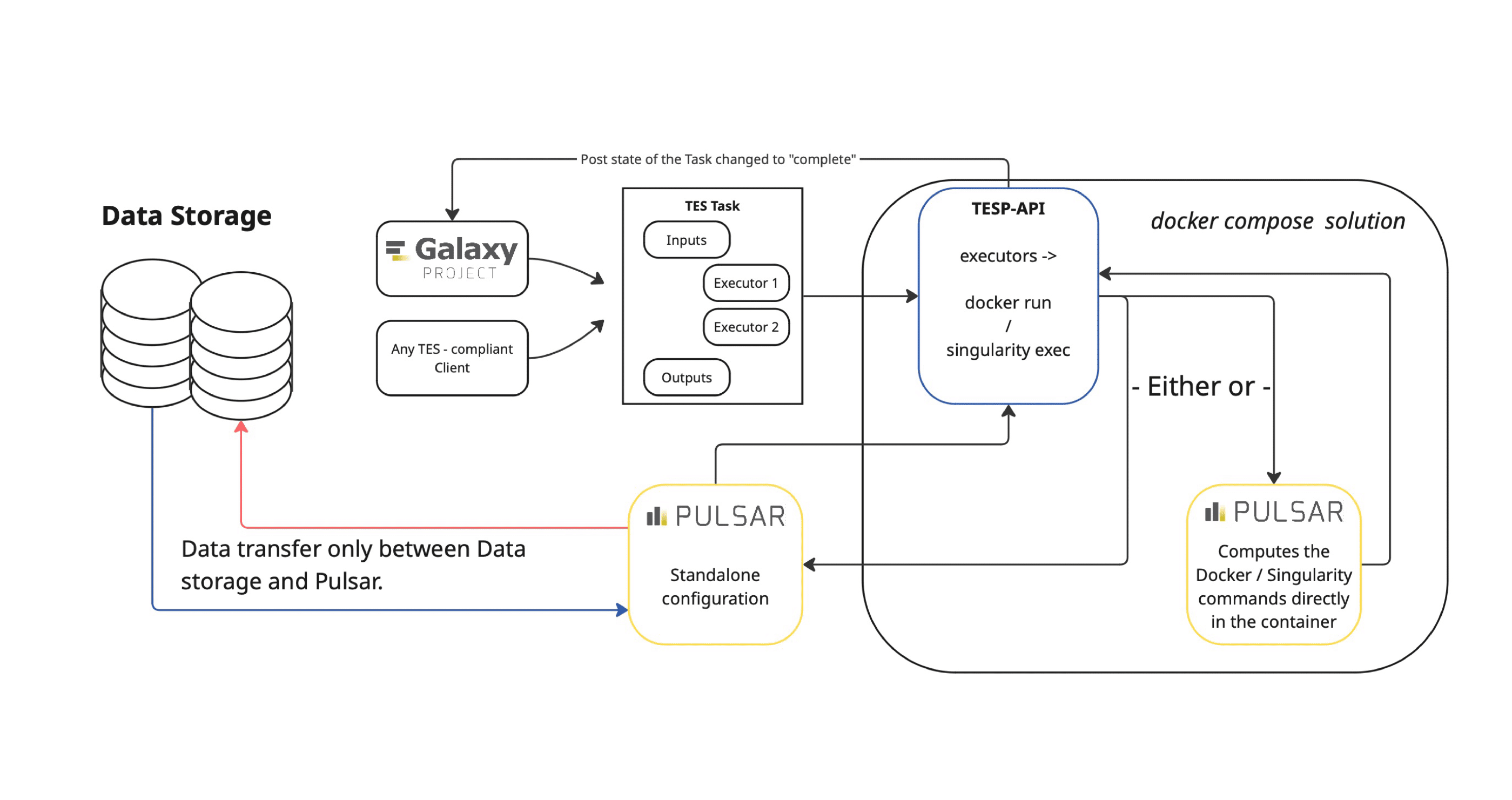Galaxy TESP-API
Posted on October 8, 2025 (Last modified on November 24, 2025) • 2 min read • 324 wordsEnabling Standardized Task Execution in e-Infrastructure

CESNET introduces TESP-API — a lightweight microservice implementing the GA4GH Task Execution Service (TES) standard, bridging scientific platforms with distributed compute resources
The ability to submit and manage computing tasks across different environments is essential for modern e-infrastructure. The GA4GH Task Execution Service (TES) defines a standard interface for doing exactly this, ensuring that diverse workflow systems can interoperate with shared computational backends.
To bring this standard into real use, CESNET has developed TESP-API — a standalone microservice that translates TES requests into executable tasks for Pulsar, a distributed job execution system widely used in the Galaxy Project ecosystem.
The source code is available at
github.com/CESNET/tesp-api

How TESP Works
TESP-API implements the GA4GH TES specification and acts as a bridge between TES clients and computational backends.
When a task is submitted, TESP generates the corresponding Pulsar execution commands, manages job staging, and delegates file transfers directly to the compute node.
This direct storage–worker–storage approach avoids unnecessary data hops, improving performance and reliability.
TESP currently supports HTTP, FTP, and S3 transfer protocols.
Deployment and Use
TESP can be deployed via Docker Compose in two configurations:
- Self-contained mode – runs both TESP and a Pulsar instance, suitable for testing or local development.
- Standalone mode – connects to an existing Pulsar service, ideal for integration into production systems.
At usegalaxy.cz, the national Galaxy instance operated by CESNET, TESP-API is already used for selected workloads under production-like conditions.
This demonstrates its ability to integrate distributed data storage, computing nodes, and user-facing platforms in a unified, standards-based workflow.
Outlook
TESP-API shows how open standards such as GA4GH TES can be turned into practical, deployable services within national and international research e-infrastructures.
By connecting high-level scientific environments like Galaxy to underlying compute and storage resources, TESP helps move toward fully interoperable, production-ready distributed computing.
TESP-API is an evolving component of CESNET’s infrastructure toolkit — bridging research workflows, compute resources, and data services through open, standardized interfaces.